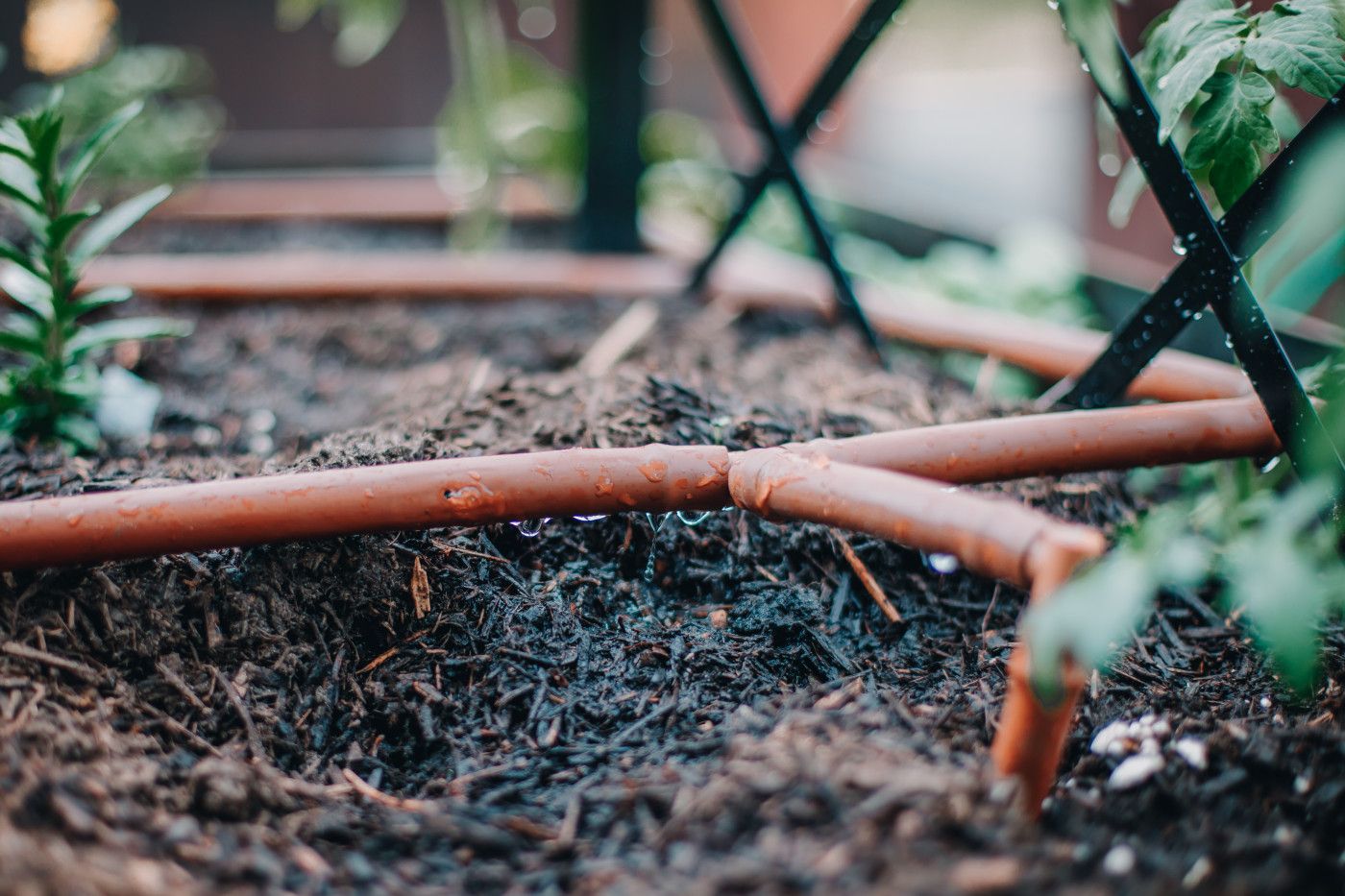Summer is a time for growth and abundance in the garden, but the intense heat can also be a major stressor for your plants and shrubs. With the sun beating down and long stretches of hot, dry weather, ensuring that your plants stay hydrated and healthy becomes crucial. This article will walk you through the best practices for watering your shrubs and plants during the summer months, how to spot signs of dehydration, and which supplements can boost your plants’ color and vibrance in the summer heat.
Understanding the Summer Heat’s Effect on Plants
During the summer, high temperatures increase the evaporation rate of moisture from both the soil and the leaves of plants. This results in water stress for many plants, especially if the temperatures rise above 90°F for an extended period. Without proper hydration and care, plants can begin to wilt, become discolored, and show signs of stunted growth.
Shrubs and plants in containers are often more vulnerable than those planted in the ground. Containers dry out faster, which means you’ll need to pay even closer attention to their hydration needs.
The Importance of Proper Watering
One of the most essential aspects of plant care during the summer is ensuring your plants receive the right amount of water. Too much or too little water can have detrimental effects, so understanding when and how to water is crucial.
When to Water Your Plants in Summer
Early Watering Is Best: Early morning is the ideal time to water your plants. Watering in the morning gives the roots time to absorb moisture before the heat of the day. It also reduces the risk of fungal diseases that can thrive in the damp conditions of overnight watering. By watering in the morning, you also allow the leaves to dry before evening, preventing them from remaining wet overnight, which could promote fungal growth.
Water Deeply and Slowly: Shallow watering can lead to the development of weak, shallow root systems. For healthy plants, it’s essential to water deeply. Use a soaker hose or a slow-drip watering system that delivers water deep into the soil. Deep watering encourages roots to grow downward and seek moisture further into the ground, where the soil retains more moisture.
How Often to Water: During hot summer days, most plants need to be watered at least once or twice a week, especially in containers or sandy soils that drain quickly. However, the frequency of watering will depend on factors like the type of plant, soil conditions, and the outdoor temperature. It’s important to adjust watering schedules based on the climate, rainfall, and the specific needs of each plant.
Consider Mulching: Mulch helps retain moisture in the soil, regulates temperature, and reduces the frequency of watering. A 2–3 inch layer of organic mulch, such as wood chips or shredded leaves, can help keep the soil cool and conserve water, especially in flower beds or around shrubs.
Signs of Dehydration in Plants
While proper watering is essential, it’s equally important to be able to spot the signs of dehydration in your plants. Dehydration can affect plants quickly, and if not addressed, it can cause permanent damage. Here are the most common signs that your plants are thirsty:
Wilting Leaves: One of the first signs of dehydration in a plant is wilting leaves. When plants don’t have enough water, they lose turgor pressure (the pressure of water within their cells), causing the leaves to droop or wilt.
Dry or Crispy Edges: Another common sign of dehydration is the appearance of dry or crispy edges on leaves. This is particularly noticeable on the tips and margins of the leaves. Plants like hydrangeas or petunias are especially prone to this during periods of heat stress.
Yellowing Leaves (Chlorosis): Lack of water can lead to yellowing leaves, a condition known as chlorosis. While yellowing can also be a sign of nutrient deficiencies, dehydration can exacerbate this condition as the plant struggles to maintain its vital functions.
Leaf Curling: Dehydration causes leaves to curl inwards as the plant attempts to conserve water. This is an adaptive mechanism, but if the issue persists, it could cause permanent damage to the plant's tissues.
Dry Soil: Of course, dry soil is a clear sign that your plants are not receiving enough water. If the soil feels dry to the touch several inches down, your plant is likely in need of a good soaking.
Slow or Stunted Growth: When a plant is stressed from dehydration, its growth will often slow down or become stunted. New growth may appear weak or underdeveloped, and flowering may be limited or delayed.
How to Correct Dehydration
If you notice any of the above signs, it’s time to address the issue of dehydration. Start by watering deeply, ensuring that the roots are getting adequate moisture. If the soil has dried out too much, you may need to water slowly over a period of time to allow it to absorb the water properly. For shrubs and larger plants, you may want to consider using a drip irrigation system to avoid overwatering or underwatering.
Supplements to Boost Vibrance and Color in the Summer Heat
In addition to proper watering, summer heat can cause plants to lose their vibrancy. To encourage lush, healthy growth and vibrant colors during the summer months, you can provide your plants with the right supplements.
1. Fertilizers for Color and Growth
Balanced Fertilizers: Use a balanced fertilizer that contains equal parts nitrogen (N), phosphorus (P), and potassium (K). Nitrogen helps with healthy leaf growth, phosphorus supports root development, and potassium helps with flower and fruit production. During summer, a slow-release granular fertilizer or liquid feed can work well.
High-Phosphorus Fertilizers: If you want to boost flower and fruit production, look for a fertilizer high in phosphorus. Phosphorus supports root growth and flower development, making it an excellent choice if you're aiming for vibrant blooms during the summer months.
Iron Supplements: If your plants are showing signs of chlorosis (yellowing leaves), they may be suffering from iron deficiency. An iron supplement, such as chelated iron, can help correct this condition and restore vibrant green colors to the foliage.
Organic Fertilizers: Organic options like compost, fish emulsion, or seaweed extract can provide your plants with nutrients in a natural, slow-release form. These are excellent choices for plants that are sensitive to synthetic fertilizers or for those seeking a more eco-friendly option.
2. Calcium for Stronger Cell Walls
Calcium plays a crucial role in strengthening the cell walls of plants, helping them withstand environmental stress such as intense heat. If your plants are showing signs of heat stress or if your soil is low in calcium, consider adding a calcium supplement, such as calcium nitrate or gypsum, to the soil.
3. Humic and Fulvic Acids
Humic and fulvic acids are organic compounds that help improve nutrient absorption, enhance soil structure, and stimulate plant growth. They can improve the soil's water retention, which is especially beneficial in hot, dry conditions. Adding a humic acid supplement can help your plants maintain their vigor and vibrance throughout the summer.
4. Seaweed Extract
Seaweed extracts are a fantastic natural supplement that can help your plants cope with summer stress. Rich in micronutrients and growth hormones, seaweed extract can improve root development, boost chlorophyll production, and enhance overall plant resilience. Additionally, it helps plants tolerate drought better and encourages more robust growth.
5. Foliar Sprays
Foliar sprays are a quick way to deliver nutrients directly to your plants’ leaves, bypassing the roots. During the summer, foliar feeding can help provide an extra boost of nutrients to your plants when they're under stress. Look for foliar sprays that contain essential nutrients like magnesium, iron, and potassium, all of which can enhance color and promote healthy growth.
Caring for your shrubs and plants during the intense summer heat is all about striking the right balance between proper watering, recognizing signs of dehydration, and supplementing with the right nutrients to enhance vibrance. By watering early in the morning, ensuring deep hydration, and paying attention to the signs of stress, you can help your plants thrive even in the hottest of months. Additionally, supplements such as balanced fertilizers, seaweed extract, and calcium can support healthy growth, vibrant color, and increased resilience.
When we come out to work on landscape projects, we like to see your plants looking lush, healthy, and colorful. If we see sign of distress, we give suggestions of possible actions to take to bring some color and vitality back to your yard.
A beautiful yard means a happy yard.

